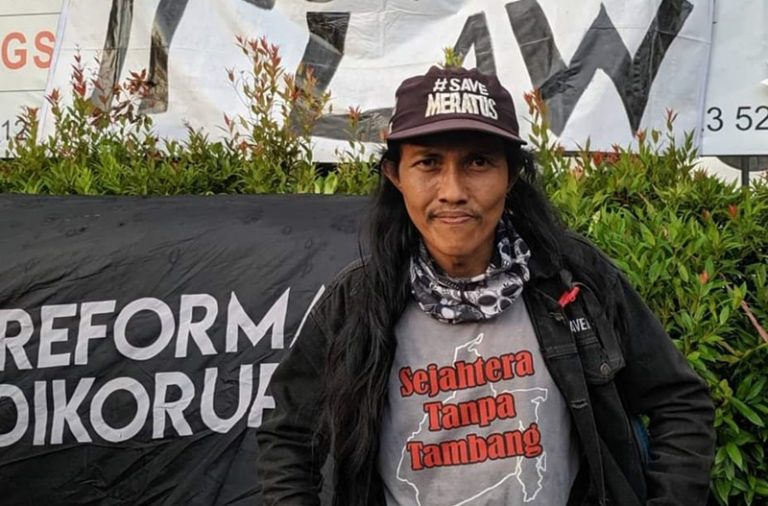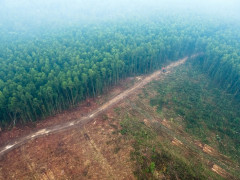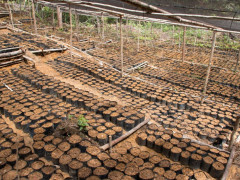Potential for Prolonged Conflict in the Lebung Itam Village Peatlands
By Ibrahim ArsyadAfter BRGM's Life is Extended
The extension of BRGM's life certainly has a positive impact, especially considering its main task to restore the function of peat ecosystem after the 2015 forest and land fires.
It's just that the policymakers in this non-structural institution need to evaluate every work that has been done in the regions. An evaluation must also be carried out on agencies that provide assistance in the mapped areas, especially South Kalimantan.
One way to evaluate institutional work is by disclosing the report or presenting the results of restoration works to the public. Moreover, it would be more appropriate if the presentation was delivered to the people living around peatlands who directly experienced the benefits of the program.
With performance disclosure, it will be easier for the institutions to match their performance with the results obtained from the community. Through such agendas, institutions become more open and accountable to the public.
Furthermore, BRGM, through its assisting agencies in South Kalimantan, should explain their plan for future activities to the public on a massive scale, including their main tasks, work programs, and budget to be disbursed this year.
The problem is, people in South Kalimantan rarely hear about the results of peat restoration activities from year to year. They also rarely see them in the mass media. The narratives about peat restoration in South Kalimantan are not completely informed, so that in the end, the problems are not fully understood. This means that there are inter-institutional communication issues that must be resolved immediately.
But what happened was, the government added a new mangroves rehabilitation task to the agency. With the additional work targets, BRGM's work is getting harder and they have bigger responsibilities. Moreover, there are still ongoing problems surrounding the peat swamp ecosystem. For example, land grabbing, human rights issues, restoration areas that overlap with concession areas, social and spatial mapping that is not comprehensive and optimum, forest and land fires that can occur any time with different escalation and extent.
Considering the extent of authority and areas that must be restored (peatland) and rehabilitated
(mangroves), BRGM should learn from past experiences as BRG. There are many learning and takeaways from BRG's programs and measures, which may not be of maximum benefit to the people whose lives depend on their surrounding ecosystem.
BRGM actually faces the same recurring problems. The problem often gets more complicated when the restoration target is concession areas. Many peat swamp ecosystems in South Kalimantan have been converted into large-scale oil palm plantations.
When they started their operations, these plantation companies may have followed the laws and regulations and various policies that are directly or indirectly related to the peat swamp ecosystem. However, due to changes in policies, for example, the obligation to restore their concession areas, their operations are relatively disrupted. Especially when they are required to fulfill BRGM programs and work targets.
An example of a relatively “simple” case happened in Hapalah Village, Banua Lawas, Tabalong. A company has obtained a concession area that covers a part of the village area but they have not started to work on the area due to unfavorable natural conditions. Another case occurred in Nagara, Hulu Sungai Selatan, where a large number of peat swamps were cleared by oil palm plantations.
Such conditions have certainly disturbed the villagers, who then complained to various institutions, including the local government who asked BRG to intervene. But for some reason, the intervention result did not satisfy the villagers. Such cases can occur in various areas in South Kalimantan because large-scale oil palm plantations exist in almost all areas of that province.
The ineffectiveness of BRG's restoration program in concession areas is most likely due to the lack of communication with the concession holders. Or it could be because the companies are unwilling to jointly carry out restoration activities in their concession areas.
Therefore, going forwards, BRGM should put extra effort into these two issues.
*The author is the Executive Director of WALHI South Kalimantan and Coordinator of Simpul Jaringan Pantau Gambut South Kalimantan
**THIS ARTICLE WAS PREVIOUSLY PUBLISHED ON 9 AUGUST 2021 ON ONLINE MEDIA jejakrekam.com**




